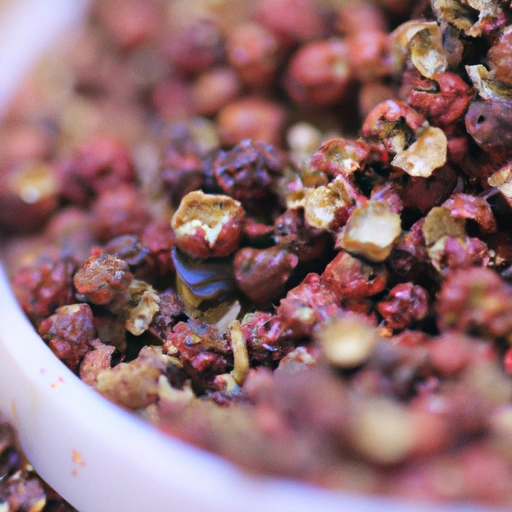Sichuan Pepper
Description

Sichuan pepper is a distinctive spice known for its unique aroma and tingling sensation rather than outright heat. It is not related to black pepper or chili peppers; instead, it hails from the prickly ash tree family. The reddish-brown husks, often called husk or pericarp, are the parts used in cooking, containing tiny black seeds that are typically discarded due to their gritty texture. In Sichuan pepper's flavor profile, one can detect hints of lemony, peppery, and slightly woodsy notes, defining the characteristic 'málà' taste in Sichuan cuisine.
Common uses
Sichuan pepper is widely used in Asian cuisines, particularly in Chinese, Tibetan, Nepalese, and Bhutanese dishes. It's a key ingredient in Chinese five-spice powder and Japanese shichimi togarashi. Its distinctive mouth-numbing sensation is essential in many Sichuan dishes, including mapo tofu and kung pao chicken.
Nutritional value
Calories
A 1 teaspoon (about 2 grams) serving of Sichuan pepper contains approximately 8 calories.
Protein
Sichuan pepper offers about 0.3 grams of protein per 2-gram serving.
Fat
The spice contains a negligible amount of fat, totaling less than 0.1 grams.
Carbohydrates
Carbohydrates are present in small amounts, with roughly 1.6 grams per teaspoon.
Vitamins
While not a significant source of vitamins, Sichuan pepper contains trace amounts of vitamin A and certain B vitamins.
Minerals
Sichuan pepper is a good source of minerals such as potassium, magnesium, and phosphorus, as well as trace elements like iron and copper.
Health benefits
Traditionally believed to have various health benefits, Sichuan pepper is said to aid in digestion, stimulate the appetite, and reduce pain. Modern research suggests that it has antioxidant properties and may help combat inflammation.
Potential risks
While Sichuan pepper is generally safe for most people, some may experience an adverse reaction to its numbing effect. It should be consumed in moderation, as excessive consumption can lead to stomach upset. Pregnant women and those with certain medical conditions should consult with a healthcare provider before adding it to their diet.
Common recipes
Sichuan pepper is famously used in Sichuan cuisine recipes such as mapo tofu, Sichuan hotpot, and dan dan noodles. It is also incorporated into spice blends and rubs for meats and vegetables.
Cooking methods
Often, Sichuan pepper is toasted and then ground into a powder before being added to dishes. It can also be infused in oils or used whole in stews and braises.
Pairing with other ingredients
This spice pairs well with meats like pork, beef, and chicken, and complements other strong flavors like ginger and garlic. It also adds an intriguing twist to fruit desserts and chocolate.
Summary
Sichuan pepper is a complex and versatile spice that can elevate dishes with its unique numbing and citrus-like flavor. Used in moderation, it can add depth and excitement to a variety of recipes, contributing both to the dish's sensory experience and its potential health benefits.